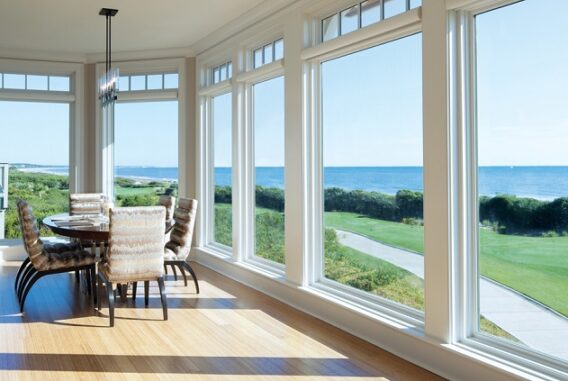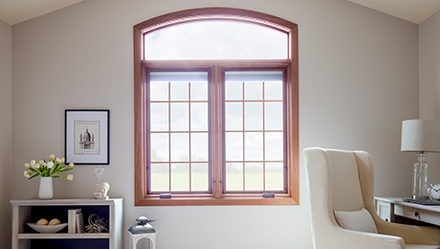Energy efficient windows can dramatically reduce heating and cooling costs in the home. According to the Environmental Protection Agency’s Energy Star Program, replacing all windows with energy efficient ones lowers household energy bills by an average 12 percent across the nation. That’s why the U.S. Energy Department encourages every homeowner who is replacing his or her windows to look for the Energy Star label regardless of the window type.
But, where exactly do these cost savings come from?
Keeping heat in (or out)
Windows can lose or gain heat by convection, radiation, conduction, and air leakage. This heat transfer is expressed in U-factors.
Energy efficient windows minimize conduction
One way through which energy efficient windows reduce heat loss is by reducing conductivity. Conduction basically refers to movement of heat through a material. By reducing the conductivity of the material, you effectively reduce the amount of heat that can pass through it. Multiple glazed windows trap low-conductive gas, such as argon, between panes of glass to minimize movement of heat into or outside the house.
By keeping warm air in during the cold seasons, and keeping cool air in during hot seasons, your interior air condition can be naturally regulated to an extent that you will need very little artificial heating or air conditioning to achieve perfection.
The windows also minimize convection
Heat can also move through windows via convectional currents. In cold weather, heated indoor air will rub against the interior surface of the glass window. Since the window surface is likely to be cold, the air will cool, become dense, and drop towards the floor. As the condensed air drops, warm air will rush in to take its place at the cold window surface. This cycle can continue over and over, and the energy initially used to warm the air, can now be condensed wasted.
As the cycle continues, a time comes when most of the warm air has been converted to cold water drops, and indoor temperatures lowers, forcing you to turn up the thermostat. But does that solve the problem? Unfortunately, not with the convective cycle still in process.
The only real solution is to raise inboard glass temperatures to slow the convective cycle. Energy efficient windows achieve this by using multiple panes of glass, separated by low-conductance gas fillings and warm edge spacers.
With the windows in place, you’ll need very little additional heating to warm your interiors, leading to cost savings.
Letting in the right amount of sun
In colder climates, people need both the sun’s heat and light all the time, whereas in hot climates, we may only want the light but not the heat. Energy saving windows now allow you to have what you like!
Low energy (Low-E) coatings, which are transparent metallic oxides, can be used to reflect up to 90% of long wavelengths (or heat energy) while passing shorter wavelengths (or visible light). In warmer climates, these windows can reflect the sun’s long wavelengths (heat) while admitting visible light, which helps to keep the house cooler especially in the summer. In colder climates, they will reflect long wavelengths (heat) back into the house while allowing visible light to pass through, effectively maintaining interior warmth.
Research shows that the insulating value of Low-E coatings is almost equal to what you would achieve by adding an additional pane of glass to your window. It has also been proved that combining Low-E coatings with low-conductance gas fillings can boost energy efficiency by nearly 100%. What a great way to save!
Summary
Don’t lose money when you can now heat and cool your interiors at a fraction of the cost. Replace your windows with energy efficient ones today, and start saving. Visit www.magnoliahomeremodeling.com for more information.



